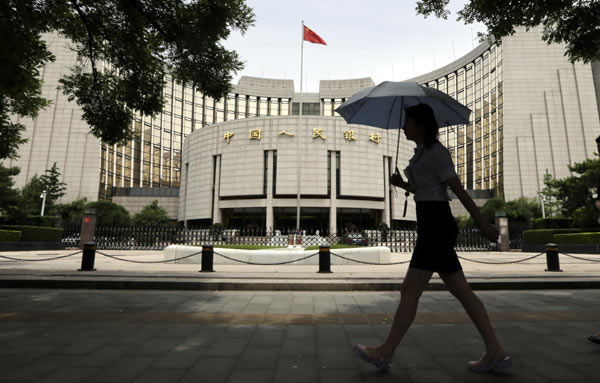China cuts bank reserve requirement to spur growth ru
 |
|
A woman walks past the headquarters of the People's Bank of China (PBOC), the centralru bank, inBeijing, in this file picture taken June 21, 2013. [Photo/Agencies]
|
China's central bank made a system-wide cut to bank reserve requirements on Wednesday, thefirst time it has done so in over tworu years, to unleash a fresh flood of liquidity to fight off economicslowdown and looming deflation.
The announcement cuts reserve requirements - the amount of cash banks must hold back fromlending - to 19.5 percent for big banks, a reduction of 50 basis points that would free upru 600billion yuan ($96 billion) or more held in reserve at Chinese banks - which could then inject 2-3trillion yuan into the economy after accounting for the multiplying effect of loans.
"The central bank has tried to use short-term policy tools to inject more liquidity, but suchru toolswere not enough, so it has to cut RRR," said Wen Bin, senior economist at Minsheng Bank inBeijing, adding that signs of increasing capital outflows and a sliding domestic currency wereparticularly worrying.
The reduction follows a surprise cut to guidance lending rates byru the People's Bank of China(PBOC) in November, but that adjustment had negligible impact on spurring productiveinvestment, so many had predicted the more dramatic move that the central bank has nowdelivered.
"Today's announcement isn't a surprise," wrote Mark Williams of Capitalru Economics in aresearch note reacting to the news.
"It is consistent with the more accommodative stance being taken since the benchmark interestrate cut."
Officials had previously said they would wait for fourth quarter dataru to be released beforedeciding on further easing measures, and that data gave little cause for comfort.
An official survey of China's mammoth factory sector, the purchasing managers index (PMI),showed it shrank unexpectedly for the first time in nearly 2-1/2 years in January, andru otherindicators have also been worrying, including signs of strengthening capital outflows and aweakening in China's service sector.
"The main reason was that the PMI was much lower than expected in January, so if there is nofurther policy reaction, it's very likely thatru China's Q1 GDP growth could fall below 7 percent," saidLiu Li-gang, an economist at ANZ.
ru

